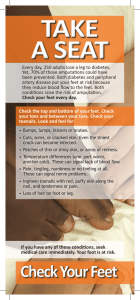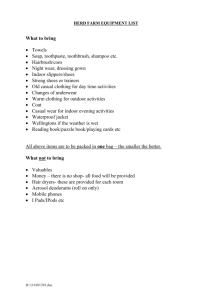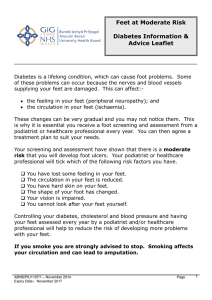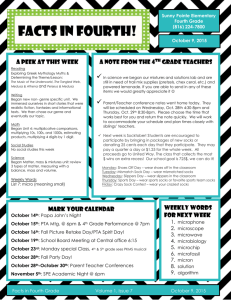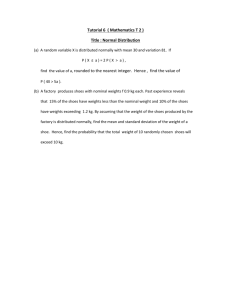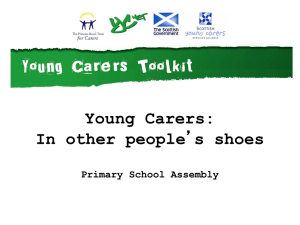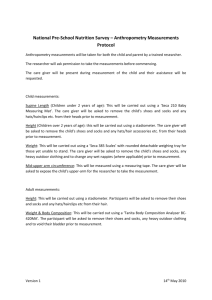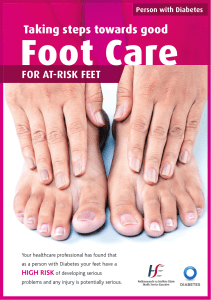Foot care and Diabetes - Diabetes Counselling Online
advertisement
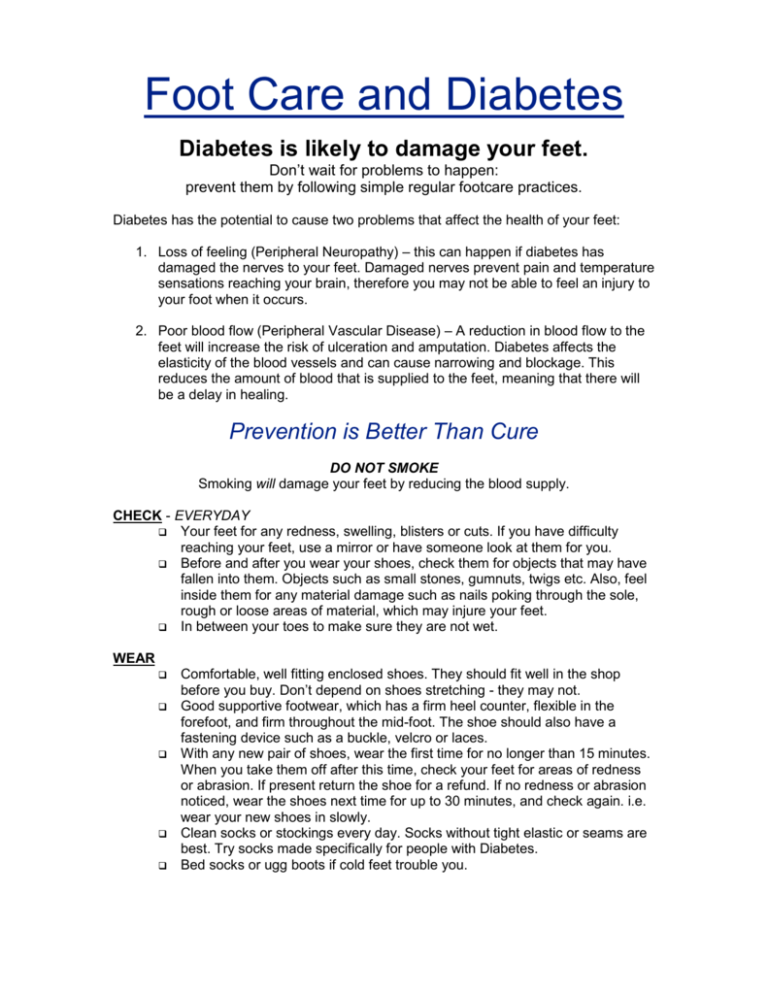
Foot Care and Diabetes Diabetes is likely to damage your feet. Don’t wait for problems to happen: prevent them by following simple regular footcare practices. Diabetes has the potential to cause two problems that affect the health of your feet: 1. Loss of feeling (Peripheral Neuropathy) – this can happen if diabetes has damaged the nerves to your feet. Damaged nerves prevent pain and temperature sensations reaching your brain, therefore you may not be able to feel an injury to your foot when it occurs. 2. Poor blood flow (Peripheral Vascular Disease) – A reduction in blood flow to the feet will increase the risk of ulceration and amputation. Diabetes affects the elasticity of the blood vessels and can cause narrowing and blockage. This reduces the amount of blood that is supplied to the feet, meaning that there will be a delay in healing. Prevention is Better Than Cure DO NOT SMOKE Smoking will damage your feet by reducing the blood supply. CHECK - EVERYDAY Your feet for any redness, swelling, blisters or cuts. If you have difficulty reaching your feet, use a mirror or have someone look at them for you. Before and after you wear your shoes, check them for objects that may have fallen into them. Objects such as small stones, gumnuts, twigs etc. Also, feel inside them for any material damage such as nails poking through the sole, rough or loose areas of material, which may injure your feet. In between your toes to make sure they are not wet. WEAR Comfortable, well fitting enclosed shoes. They should fit well in the shop before you buy. Don’t depend on shoes stretching - they may not. Good supportive footwear, which has a firm heel counter, flexible in the forefoot, and firm throughout the mid-foot. The shoe should also have a fastening device such as a buckle, velcro or laces. With any new pair of shoes, wear the first time for no longer than 15 minutes. When you take them off after this time, check your feet for areas of redness or abrasion. If present return the shoe for a refund. If no redness or abrasion noticed, wear the shoes next time for up to 30 minutes, and check again. i.e. wear your new shoes in slowly. Clean socks or stockings every day. Socks without tight elastic or seams are best. Try socks made specifically for people with Diabetes. Bed socks or ugg boots if cold feet trouble you. SELF FOOT CARE DO’s: Wash and dry your feet thoroughly, especially between your toes, every day. Use a water-based cream such as sorbolene on your feet every day, but be sure not to apply cream between your toes. Cut toe nails straight across and gently file rough edges. Never cut nails shorter than the end of your toe and don’t cut down the sides of the nail as this may leave jagged edges. If you use a bath or foot spa check the water temperature with a bath thermometer. This will reduce your risk of causing a burn to your feet. DON’T’S: Don’t Soak your feet for long periods Don’t use talcum powder on your feet Don’t use any product that hasn’t been recommended by your podiatrist on corns, calluses or warts. Don’t go bare-footed. The feet are at a greater risk of injury without shoes. Injury can lead to ulcers, infection, gangrene and possible amputation. Don’t wear shoes without socks. Don’t wear thongs or flip-flops or sandals. WARNINGS If you use hot water bottles, electric blankets or heaters, you may burn yourself and NOT FEEL it happening. In winter do not put your feet near a fire or radiator. It is possible to burn your feet and NOT FEEL it happening. If you find a break in the skin (cut, scratch, broken blister etc), you must clean it and keep it covered with a sterile dressing and see your doctor or a podiatrist as soon as possible. FIRST AID If you have a burn, cut, scratch, graze, broken blister, or any other area of broken skin, clean it and put a dry dressing on it to reduce the risk of getting it infected. If it doesn’t seem to be getting better, or is deteriorating, see your Podiatrist or Doctor as soon as possible. Walk This simple form of exercise helps to maintain Your general health, and the health of your feet. S:\DIABETES\Brochures\Educators brochures\Footcare\Footcare Jan 08.doc
